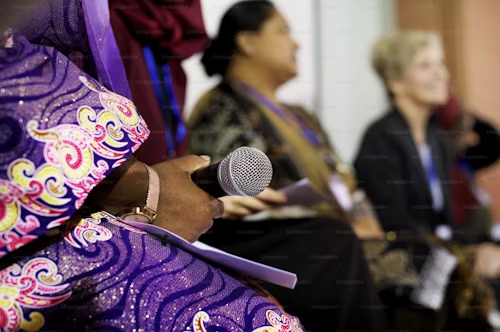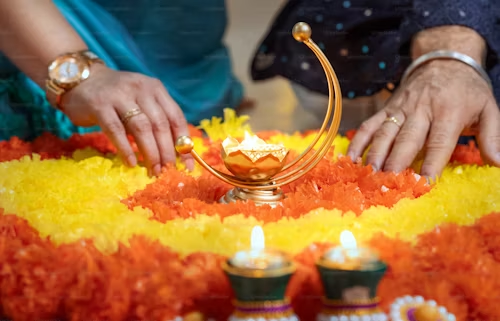✍Analysis of Ethnographic Study Data✍
Ethnographic research involves immersing yourself in a culture or community to understand their behaviors, practices, and beliefs. Once you have gathered data through observations, interviews, and field notes, the next step is to analyze this rich, qualitative information. In this blog post, we’ll break down the process into manageable sub-sections to guide you through the analysis of ethnographic study data.Here are steps to analyze ethnographic study data.
1. Organizing Your Data
Before diving into the analysis, it’s essential to organize the collected data. Ethnographic studies often yield a mix of interviews, field notes, photos, and videos.Steps:
- Transcribe Interviews: Convert recorded interviews into text for detailed analysis.
- Compile Field Notes: Ensure your observations and notes are complete and legible.
- Categorize Media: Organize photos and videos based on the location, date, or theme.
Example:
If you studied a local farming community, group your notes into categories like planting techniques, community interactions, and seasonal rituals.
2. Familiarizing Yourself with the Data
Spend time reading and re-reading your notes and transcripts. This allows you to get a holistic view and identify emerging patterns.Tips:
- Highlight recurring phrases or concepts.
- Note any surprising behaviors or contradictions.
Example:
In a study of street vendors, you may notice repeated mentions of challenges like competition, weather dependency, and customer preferences.
3. Coding the Data
Coding is the process of labeling chunks of data with tags or categories that represent themes, ideas, or patterns.Steps:
- Open Coding: Start by labeling all meaningful segments without any predefined categories.
- Axial Coding: Group related codes into broader themes.
- Selective Coding: Identify the most significant themes that address your research question.
Example:
In a study on urban youth culture, you might code interactions under labels like "fashion trends," "social media influence," and "peer dynamics."
4. Identifying Themes and Patterns
Once you’ve coded the data, analyze the codes to find recurring themes and relationships between them. Themes help you understand the larger narrative.Questions to Ask:
- What do participants emphasize the most?
- Are there contradictions or variations within the data?
- How do different groups within the community perceive the same issue?
Example:
In a workplace ethnography, themes like "team collaboration," "hierarchical communication," and "job satisfaction" may emerge.
5. Interpreting the Findings
Interpretation involves connecting your themes to your research question and theoretical framework. This step is where you derive meaning from the data.Key Points:
- Compare findings with existing literature.
- Consider cultural, social, or economic contexts.
- Reflect on how your presence as a researcher may have influenced the data.
Example:
If studying a rural school, your findings might show that teaching methods are influenced more by local traditions than by national education policies.
6. Triangulating the Data
Triangulation involves cross-checking data from different sources to ensure accuracy and validity.Methods:
- Compare interview responses with observational data.
- Validate findings with photos or videos.
- Seek feedback from participants.
Example:
If villagers claim they prefer traditional farming methods, verify this by observing their fields and tools.
7. Presenting Your Analysis
The final step is to present your findings coherently, often through narratives, visuals, and quotes.Tips:
- Use direct quotes to amplify participants' voices.
- Include visuals like photos, charts, or maps.
- Summarize themes in tables for clarity.
Example:
In a presentation on cultural festivals, combine quotes from participants about the festival’s meaning with images of the event and a timeline of activities.
Conclusion
Analyzing ethnographic study data is both an art and a science. By organizing, coding, and interpreting the data systematically, you can uncover meaningful insights into the community or culture you are studying. Always aim to represent participants authentically and contextualize their experiences within broader frameworks.
Let’s take an ethnographic research problem related to "The Role of Traditional Festivals in Modern Indian Society" and break it down using the steps of data analysis, as described above.
Research Problem:
How do traditional festivals, like Diwali or Holi, influence community bonding and individual identity in urban areas of India?
1. Organizing Your Data
Before starting the analysis, you first need to organize the data you’ve collected. This could include interviews with participants from different cultural backgrounds, field notes from observing festivals, photographs, or videos of celebrations.
Steps:
- Transcribe Interviews: Suppose you have interviewed urban residents about their participation in Diwali celebrations. You will transcribe these conversations, capturing details about their personal experiences, feelings, and observations.
- Compile Field Notes: Notes from your field observations during Diwali celebrations in various neighborhoods would be collected. This might include details about decorations, rituals, and communal activities.
- Categorize Media: If you have videos or photos from the festivals, categorize them according to aspects like “rituals,” “community involvement,” and “family bonding.”
Example:
- Interview data: Urban youth explaining how they participate in Diwali despite being away from their hometowns.
- Field notes: Descriptions of neighborhood celebrations, such as people decorating houses, exchanging sweets, and organizing community fairs.
2. Familiarizing Yourself with the Data
Now, spend time immersing yourself in the data to get a sense of recurring themes or patterns.
Steps:
- Read and re-read your interview transcriptions and field notes.
- Look for any references to how people connect with their cultural identity, community bonds, or modern challenges.
- Highlight key terms like "family," "community," "rituals," "modernization," and "tradition."
Example:
You might find that people often mention the sense of “belonging” when talking about the importance of celebrating traditional festivals. Others might talk about the struggle of balancing modern life with traditional values.
3. Coding the Data
In this stage, label sections of the data with codes that represent themes, ideas, or patterns that emerge from your research.
Steps:
- Open Coding: Read through your data and label meaningful chunks. For example, you might code responses like "family togetherness" or "community unity" when participants talk about Diwali celebrations.
- Axial Coding: Group similar codes into broader categories, such as "community bonding," "individual identity," "cultural preservation," etc.
- Selective Coding: Identify which of these themes are most central to answering your research question.
Example:
- Codes: "Family togetherness," "Cultural preservation," "Economic impact of festivals," "Modern vs. traditional values."
- Themes: These codes might group into broader themes such as "Impact on community bonding" or "Modern challenges in maintaining traditions."
4. Identifying Themes and Patterns
Now that you have your coded data, analyze it to identify key themes and relationships. This step involves synthesizing your codes into meaningful insights.
Steps:
- What patterns emerge when participants talk about the festivals?
- Are there any contradictions or differences in how younger and older generations view the festivals?
- How does the modern urban context impact traditional practices?
Example:
You may find that older participants in your study speak passionately about how traditional festivals reinforce family ties, while younger participants might focus more on how festivals are an opportunity for socializing with friends. The tension between maintaining traditions and adopting modern practices might be a recurring theme.
5. Interpreting the Findings
At this stage, you need to interpret your themes and relate them to your research questions. Use your theoretical framework to understand the meaning behind these findings.
Steps:
- Consider how your themes about community bonding, family ties, and cultural preservation relate to broader social and cultural theories.
- Think about how the influence of modernization might be reshaping these traditional practices in urban settings.
- Connect your findings to existing literature on cultural identity and festivals in modern society.
Example:
You might interpret that while traditional festivals like Diwali help maintain cultural identity and foster community bonds, urbanization and modernization are shifting the ways people celebrate. For example, the commercialization of Diwali (through sales of lights, decorations, and sweets) may be overshadowing the more spiritual or communal aspects.
6. Triangulating the Data
To ensure the validity of your findings, triangulation helps by comparing data from different sources or methods.
Steps:
- Compare your interview data with your field notes. Do the themes you found in the interviews appear in your observations?
- Use photos or videos to cross-check the rituals and community interactions you observed.
- Seek feedback from participants about your analysis to ensure accuracy.
Example:
Compare your findings about urban youth’s approach to Diwali with what you observed in person. For example, if your interviews highlight a growing disinterest in traditional rituals, check if your field notes from actual celebrations show fewer people participating in rituals like prayer ceremonies.
7. Presenting Your Analysis
The final step is to present your findings in a way that tells the story of your research and supports your conclusions.
Steps:
- Write a narrative that links your themes to your research question.
- Use direct quotes to illustrate key findings.
- Include visual elements like photos, charts, or maps to enhance the understanding of your analysis.
Example:
In your final report or presentation, you might showcase quotes from participants explaining their personal connections to Diwali, backed by photos of community celebrations. You could include a chart showing how different age groups participate in the festival or a comparison of traditional vs. modernized festival practices.
✍Conclusion✍
By following these steps, you can systematically analyze ethnographic data to understand the role of traditional festivals in modern Indian society. The process of organizing data, coding it, identifying themes, and triangulating results helps provide a deep, meaningful interpretation of cultural phenomena. Whether you're exploring family dynamics, community bonding, or the tension between tradition and modernity, ethnographic data analysis will enable you to generate valuable insights that contribute to understanding the evolving role of traditions in a rapidly changing society.
















.jpg)



.png)
No comments:
Post a Comment